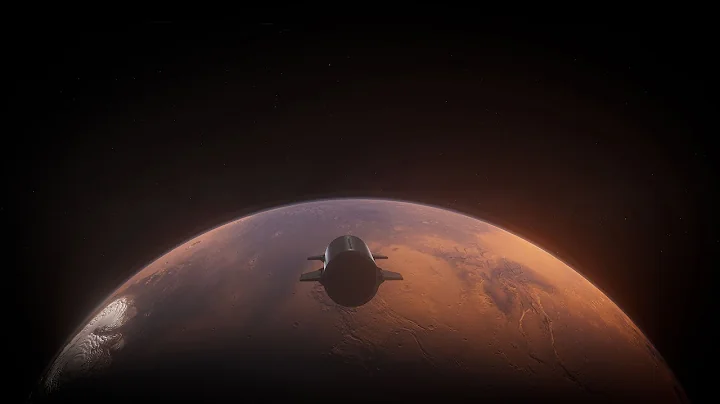
On June 14, Musk announced that the first starship will be launched to earth orbit in July, and will be launched once a month for testing in order to establish permanent bases on the moon and Mars as soon as possible.
Today, Space
The most powerful rocket in history is finally coming. The development of Mars may soon be included in the agenda. Will mankind's terraforming of Mars finally begin?

This may be too early, but the research of a group of scientists from McGee University in Canada may have given us hope. They found in an extreme environment of high salt, hypoxia and low temperature in the Arctic Circle called Lost Hammer Spring. Many rock autotrophs have been discovered that do not require oxygen and photosynthesis and can obtain energy through mineral or inorganic matter reduction reactions. They rely on methane , sulfide, sulfate, carbon monoxide and carbon dioxide A thriving living environment has been established, and all of these conditions have been discovered on Mars. Does this mean that we can use these super life forms to transform Mars?

Lost Hammer Spring is one of the most extreme environments on earth. It is located in the Nunavut Highlands of the Canadian Arctic Circle. The permafrost depth exceeds 600 meters. The spring water of Hammer Spring seeps out from the deep permafrost because of the salt. The temperature is as high as 24%, allowing water to remain unfrozen at minus 5 degrees Celsius, with an oxygen content of less than one millionth.

In such an extreme environment, no one may believe that life can exist, but microbiologist Alice Magnuson of McGee University and her colleagues do not think so. They spent several years ruling out environmental interference. , dozens of active archaea and other microorganisms were found in samples extracted from spring water, and their genes were sequenced. The results show that most of these microorganisms are brand-new species that do not rely on organic matter and oxygen to live. They can fix carbon dioxide and nitrogen from the atmosphere. Therefore, they can survive and develop in very extreme environments. They can be said to be truly super. life.

The most indispensable elements of the Martian atmosphere are carbon dioxide and nitrogen, accounting for 95.3% and 2.7% respectively. Does this make you full of daydreams? Scientists have discovered huge hypersaline lakes in the shallow layers of the Martian surface, which means that there is probably dense groundwater underground on Mars. Could such microorganisms that do not require oxygen and photosynthesis also live there? Even if not, can such microorganisms be transported to Mars in the future to participate in the terraforming of Mars?
This is a quite tempting idea. The earth was originally an environment similar to this. It was transformed by microorganisms to produce oxygen, and eventually developed into the warm and livable environment we have now.

Musk’s starship aims to create a low-cost logistics channel for Earth and Mars. It may eventually cost only US$2 million per launch. This means that large quantities of such microorganisms can be transported to Mars and placed in underground saltwater lakes. Life on Earth evolved on Mars, absorbing carbon dioxide, releasing oxygen, and terraforming Mars just like the early Earth.
Under the icy shells of Jupiter’s satellite Europa Europa and Saturn’s moon Enceladus, there is also a global subglacial saltwater ocean. Since life can exist in the dark and oxygen-free environment on earth, If they can thrive, then it is not impossible for life to exist in the subglacial oceans of these two planets. Moreover, the environment of this subglacial ocean may be much more stable than the surface of the earth. At least the bombing of meteorites will not have any impact on it. This will be the best condition for the evolution of life, so if life can be born in it, there are complexities. The possibilities for life will be greatly increased.
Life may be more tenacious than we imagine. Perhaps our understanding of life in the universe is too ignorant.
This research was published in The ISME Journal on April 8.
Reference: Active lithoautotrophic and methane-oxidizing microbial community in an anoxic, sub-zero, and hypersaline High Arctic spring
















![Rethinking Physics Informed Neural Networks [NeurIPS'21] - DayDayNews](https://i.ytimg.com/vi/qYmkUXH7TCY/hq720.jpg?sqp=-oaymwEcCNAFEJQDSFXyq4qpAw4IARUAAIhCGAFwAcABBg==&rs=AOn4CLDq7F6iLHKhjmAFymJhtlcYwaXiMw)
![AI/ML+Physics Part 1: Choosing what to model [Physics Informed Machine Learning] - DayDayNews](https://i.ytimg.com/vi/ARMk955pGbg/hq720.jpg?sqp=-oaymwEcCNAFEJQDSFXyq4qpAw4IARUAAIhCGAFwAcABBg==&rs=AOn4CLBMVhxazCgh0pAm1KCjDm3G5IBQXw)



